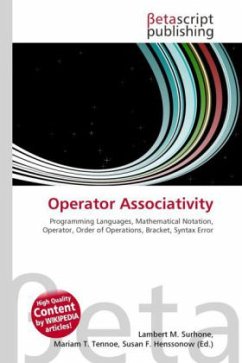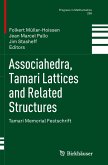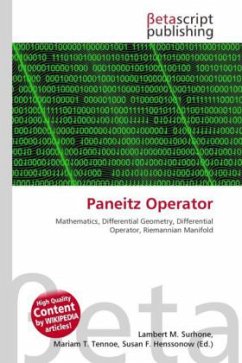Please note that the content of this book primarily consists of articles available from Wikipedia or other free sources online. In programming languages and mathematical notation, the associativity (or fixity) of an operator is a property that determines how operators of the same precedence are grouped in the absence of parentheses. Operators may be left-associative, right-associative or non-associative. The associativity and precedence of an operator depends on the programming language in question. Consider the expression a ~ b ~ c. If the operator ~ has left associativity, this expression would be interpreted as (a ~ b) ~ c and evaluated left-to-right. If the operator has right associativity, the expression would be interpreted as a ~ (b ~ c) and evaluated right-to-left. If the operator is non-associative, the expression might be a syntax error, or it might have some special meaning.
Bitte wählen Sie Ihr Anliegen aus.
Rechnungen
Retourenschein anfordern
Bestellstatus
Storno








